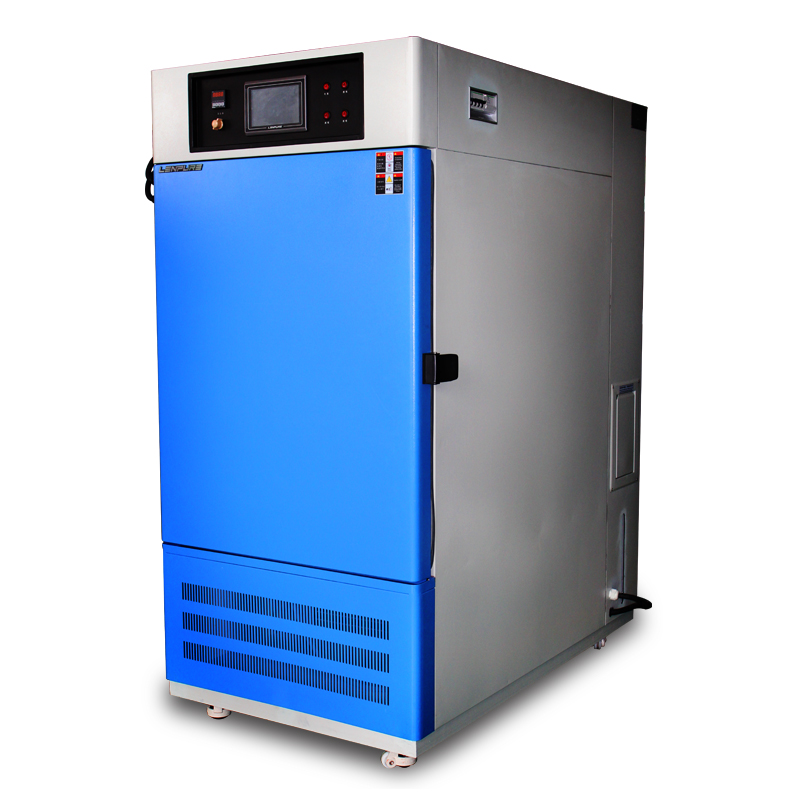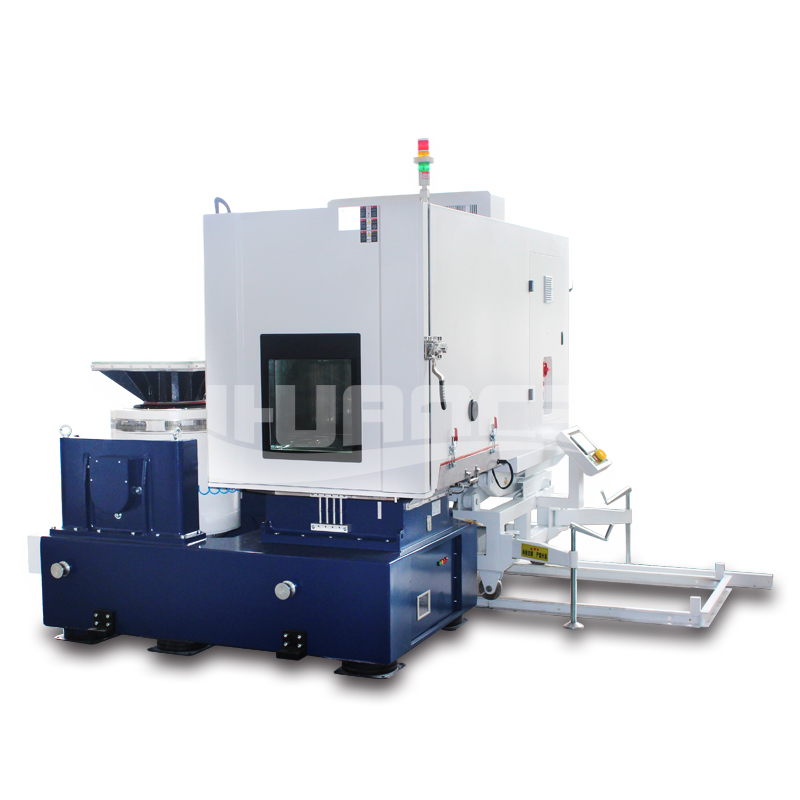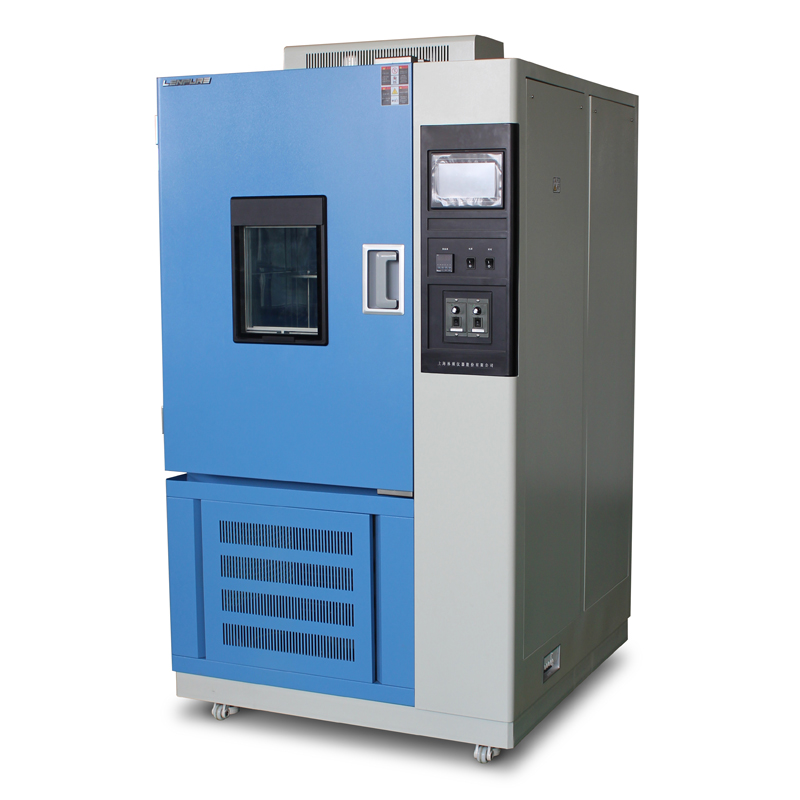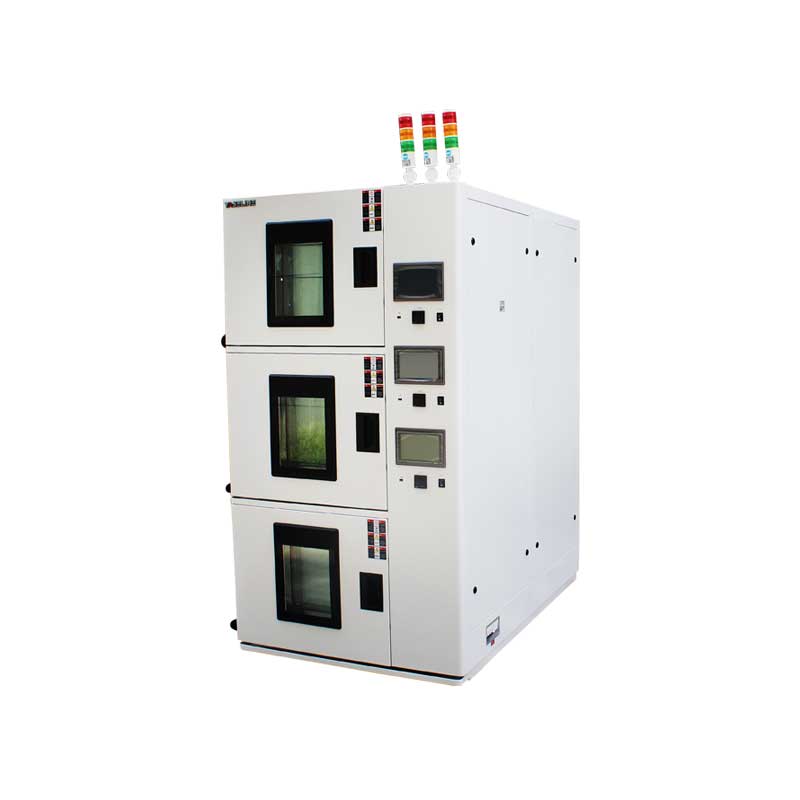What to Do When Severe Icing Occurs in Thermal Shock Chambers: Is It Operational Misuse?
Author:LINPIN Update Time:2025-09-18 Source:LINPINThermal shock chambers are critical instruments in environmental testing, designed to evaluate material resilience and product durability under extreme temperature fluctuations. These systems alternate rapidly between high and low temperature environments, replicating harsh conditions that materials and electronic components may face in real-world applications. While indispensable in sectors such as aerospace, automotive, electronics, and materials science, they are also complex systems that must be operated correctly to ensure stable performance. Among the operational challenges, severe icing inside the chamber is a common concern. This phenomenon raises the question of whether the issue stems primarily from equipment design or from improper handling during operation.
Mechanism of Icing Formation
Icing in a thermal shock chamber occurs when moisture in the air condenses and subsequently freezes on surfaces within the low-temperature zone. The thermodynamic cycle of the chamber involves rapid transitions, often from temperatures as low as -70°C to as high as +200°C. During the cooling phase, residual humidity from samples, chamber leaks, or improper pre-conditioning condenses and accumulates as ice. Repeated cycles aggravate the problem, causing ice buildup on evaporator coils, airflow pathways, and specimen holders.
The core factors influencing ice formation include:
-
Humidity Load: Test specimens that carry surface moisture or are hygroscopic significantly increase the chamber’s internal humidity level.
-
Air Ingress: Poor door sealing or frequent door openings allow external humid air to enter.
-
Cooling Efficiency: If evaporators or dehumidification systems are not functioning optimally, condensation is more likely to freeze.
-
Drainage Issues: Blocked or insufficient drainage systems allow condensed water to stagnate and freeze over time.
Understanding these mechanisms is essential in diagnosing whether icing results from operational missteps or equipment shortcomings.

Operational Factors Leading to Severe Icing
Operators often underestimate the influence of usage habits on chamber performance. Several common practices directly contribute to excessive ice accumulation:
-
Inadequate Pre-conditioning of Samples
Introducing samples with surface moisture or high humidity content greatly increases condensation inside the chamber. For instance, specimens stored in humid ambient conditions without proper drying or acclimatization transfer significant moisture into the test space. -
Improper Door Handling
Repeated opening of the chamber door during tests allows warm and humid air to rush inside, especially when conducted in high-humidity laboratory environments. This leads to immediate frost formation once the temperature drops. -
Overloading the Chamber
Excessive loading reduces air circulation efficiency, preventing uniform temperature distribution. This creates localized cold spots prone to frost accumulation. -
Neglecting Scheduled Defrosting
Many chambers are designed with automatic or manual defrost cycles. Failure to initiate or schedule these processes allows ice to accumulate unchecked, eventually impairing system performance. -
Ignoring Drainage and Filter Maintenance
Clogged drains prevent condensed water from exiting the chamber, while dirty filters reduce airflow efficiency, both of which accelerate ice buildup.
In most cases, severe icing reflects a combination of these operational errors rather than inherent equipment flaws.
Technical Implications of Icing
Severe ice formation is not merely a superficial inconvenience but poses significant risks to test reliability and equipment longevity:
-
Measurement Accuracy Degradation: Ice obstructs sensors and distorts temperature readings, undermining data integrity.
-
Airflow Restriction: Ice buildup on fans and ducts disrupts uniform thermal distribution, leading to non-compliant test results.
-
Mechanical Stress: Frozen components such as seals, hinges, and moving parts experience stress and premature wear.
-
Compressor Overload: Thick ice layers force compressors to work harder to maintain temperature, increasing energy consumption and reducing service life.
-
Safety Hazards: Blocked drainage and excessive ice may result in water leakage upon melting, posing electrical risks.
From a quality assurance perspective, uncontrolled icing compromises the very objective of thermal shock testing, rendering results invalid and jeopardizing product certification.
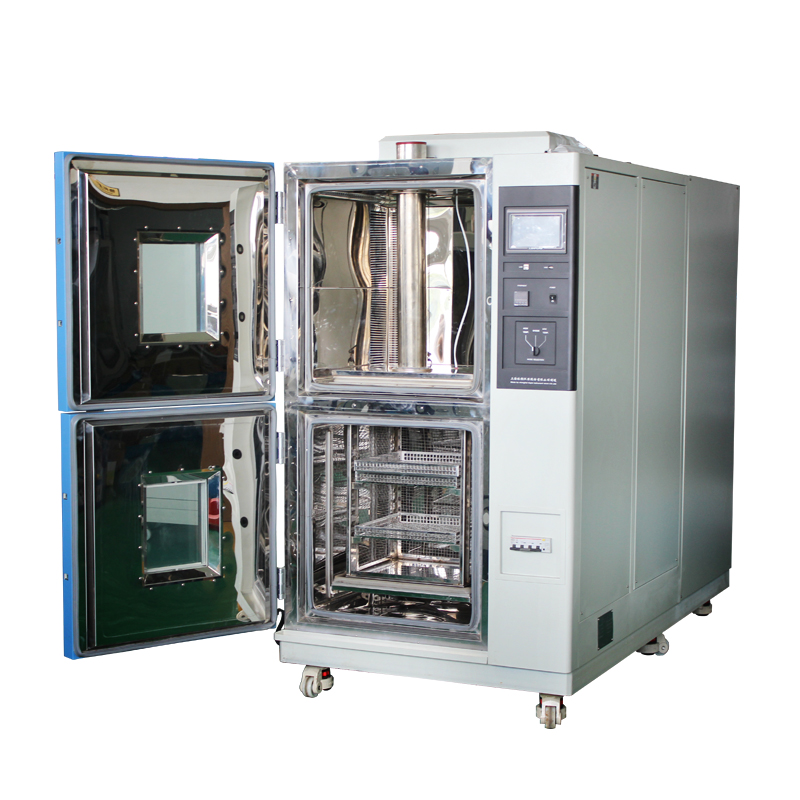
Preventive Measures Through Correct Operation
To mitigate severe icing, operators must adhere to disciplined operational practices:
-
Sample Preparation
Ensure all specimens are dry and equilibrated to laboratory ambient conditions before placement. Vacuum drying or desiccant storage prior to testing is recommended for hygroscopic materials. -
Door Management
Avoid opening the chamber during active test cycles. If access is necessary, minimize exposure duration to reduce humid air ingress. -
Load Optimization
Follow manufacturer guidelines on specimen volume and spacing. Adequate airflow must be maintained around samples for proper temperature transition. -
Regular Defrost Cycles
Schedule automatic or manual defrosting at intervals consistent with testing intensity. Chambers with intelligent defrost functions should have these features activated and monitored. -
Drainage and Ventilation Checks
Conduct routine inspections of drainage systems and replace filters as recommended. Proper drainage ensures condensed water is expelled before freezing can occur. -
Environmental Control
Position the chamber in a controlled laboratory environment with moderate ambient humidity. Dehumidifiers may be employed if necessary.
Through these operational adjustments, icing can be effectively minimized, extending both test accuracy and equipment durability.
Role of Equipment Design and Technology
While operational discipline is essential, the design quality of the thermal shock chamber also plays a critical role. Advanced chambers incorporate features that significantly reduce icing risks:
-
Precision Sealing Systems: High-quality door gaskets prevent air ingress and maintain internal stability.
-
Automatic Dehumidification: Integrated drying modules reduce internal humidity prior to low-temperature cycles.
-
Efficient Airflow Design: Optimized circulation systems prevent cold spots and reduce condensation risk.
-
Intelligent Defrost Management: Sensors and algorithms activate defrost cycles only when necessary, improving energy efficiency.
-
Enhanced Drainage Architecture: Sloped floors and insulated drain pipes ensure rapid water evacuation.
Manufacturers committed to engineering excellence integrate these solutions into their designs, reducing dependency on operator vigilance and enhancing overall reliability.
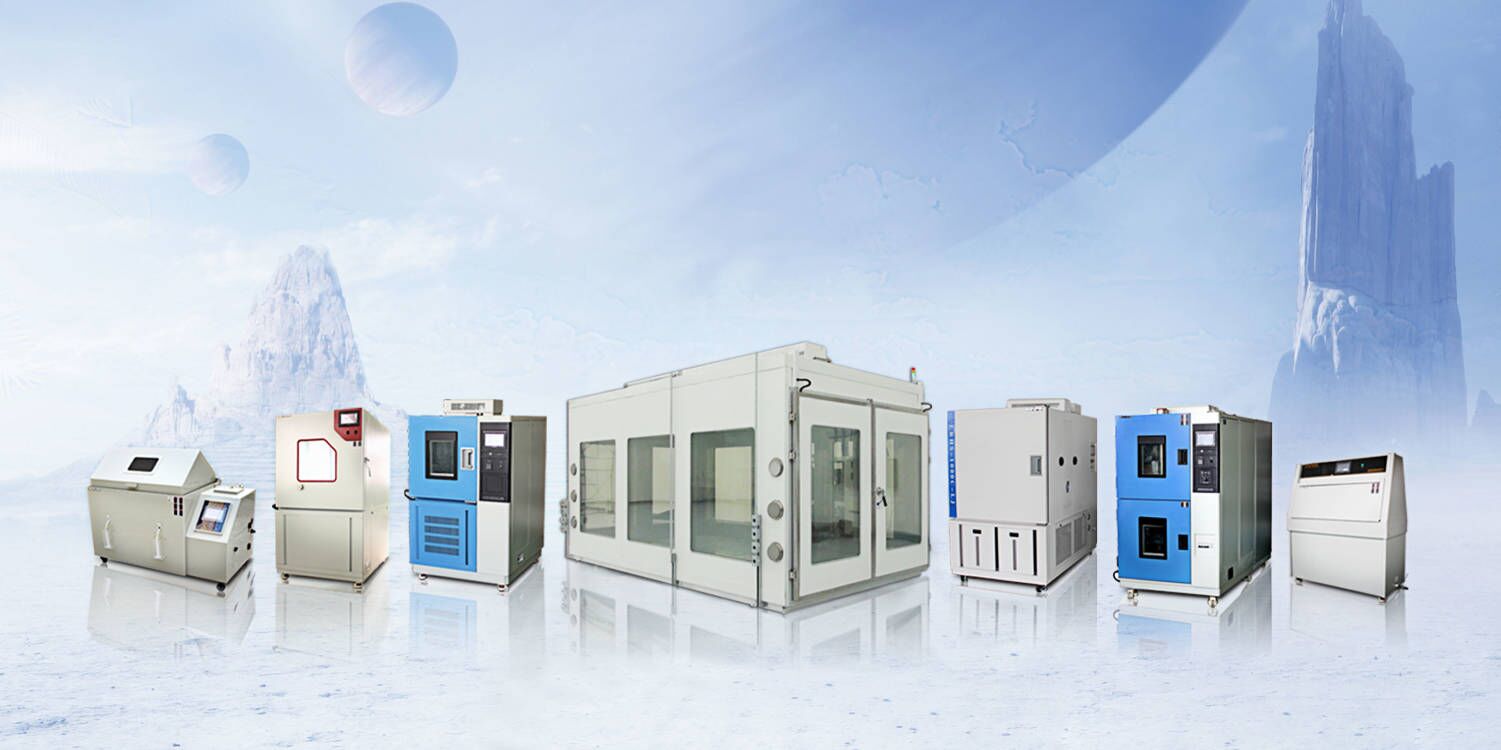
Advantages of Choosing Advanced Domestic Equipment
Recent advancements in domestic thermal shock chamber manufacturing have significantly narrowed and, in many cases, surpassed imported alternatives. Domestic systems now offer:
-
Localized Design Adaptations: Equipment engineered to operate in regional humidity and climate conditions, effectively mitigating icing issues specific to certain geographies.
-
Cost-Efficient Maintenance: Readily available spare parts and service personnel enable faster response to drainage, sealing, or defrosting issues.
-
Technology Parity: Incorporation of PLC-based intelligent control systems, real-time monitoring, and predictive maintenance alerts that reduce operational errors.
-
Flexible Customization: Domestic suppliers provide tailored configurations for specific industries, including aerospace composites, automotive electronics, and semiconductor reliability testing.
-
Competitive Lifecycle Value: Lower initial investment combined with reduced downtime from icing problems results in superior long-term return on investment.
For organizations concerned with frequent icing, investing in advanced domestic equipment provides both technological assurance and economic advantage.
Severe icing in thermal shock chambers is predominantly a consequence of operational mismanagement, compounded by environmental and design factors. Proper sample preparation, disciplined door handling, scheduled defrosting, and routine maintenance are essential practices for operators. At the same time, equipment selection plays a decisive role. Modern domestic chambers, equipped with advanced sealing, dehumidification, and intelligent defrost systems, offer a comprehensive solution that minimizes icing risk while delivering precise, reliable, and repeatable test outcomes. By aligning operational discipline with technologically advanced equipment, industries can safeguard the integrity of their environmental testing and optimize the long-term performance of their chambers.

